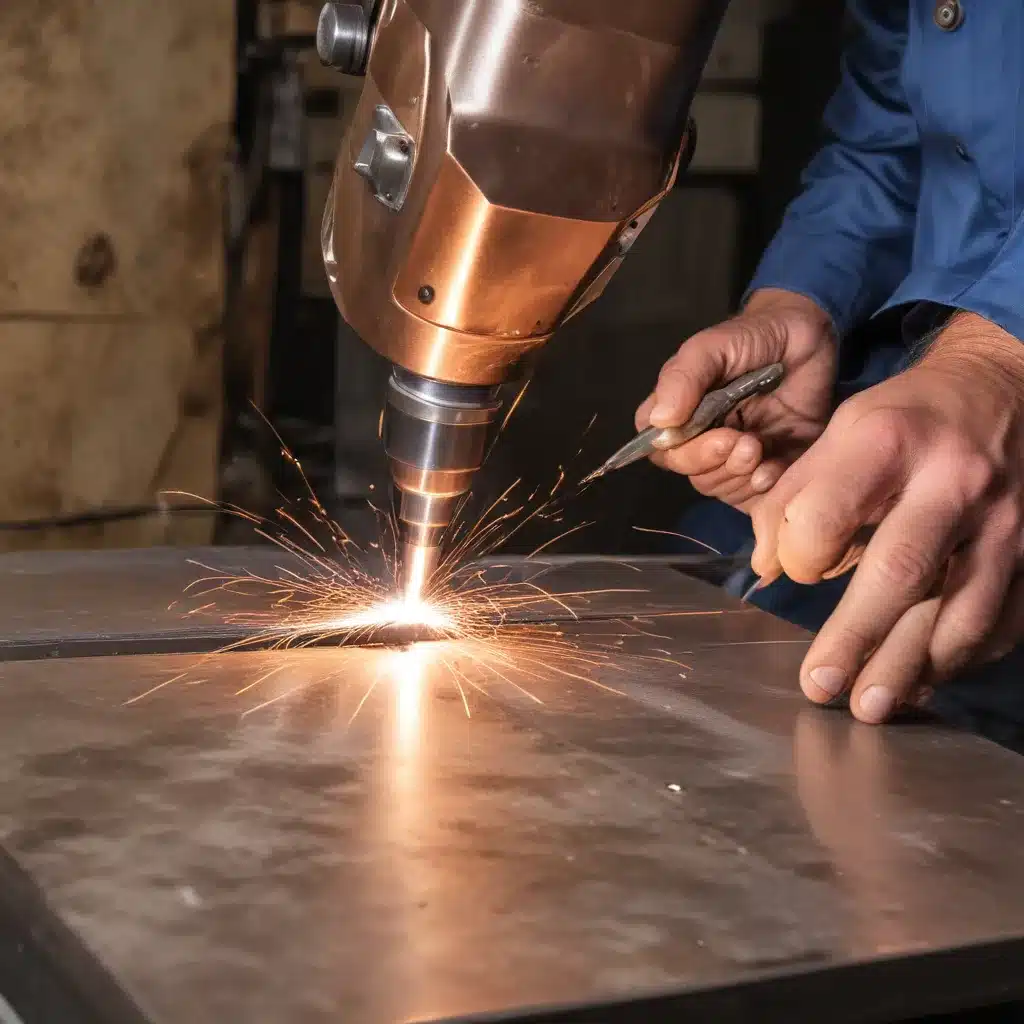
As an experienced welder and metal fabricator, I take immense pride in the art of resistance spot welding. It’s a technique that requires precision, skill, and a deep understanding of the underlying principles that govern the process. In this article, I’ll share my personal insights and practical knowledge on mastering resistance spot welding techniques, with a focus on achieving high-strength joints that are essential for demanding applications.
The Importance of Resistance Spot Welding in the Automotive Industry
In the automotive industry, where the stakes are higher than ever, welders with exceptional expertise and a keen eye for detail are highly sought after. Specializing in resistance spot welding is a challenging yet rewarding path that requires a unique set of skills and a deep understanding of stringent industry specifications.
The ability to consistently produce sound, high-strength welds is crucial for ensuring the reliability, safety, and effectiveness of critical automotive components. Whether it’s reinforcing the vehicle’s structure, joining dissimilar materials, or fabricating complex assemblies, mastering resistance spot welding techniques is a key differentiator for welders in this specialized field.
Mastering the Fundamentals of Resistance Spot Welding
Resistance spot welding is a complex process that involves the controlled application of heat, pressure, and time to create a secure, localized fusion between two or more metal sheets. To excel in this field, you must have a deep understanding of the underlying principles and the various factors that influence the quality and integrity of the weld.
Precise Control of Heat Input
One of the critical aspects of resistance spot welding is the precise control of heat input. The amount of heat generated during the welding process directly impacts the weld nugget formation, the microstructural changes in the materials, and the overall integrity of the joint.
As a skilled welder, I’ve learned to meticulously adjust the welding current, weld time, and electrode force to ensure that the heat input is tailored to the specific materials and thicknesses being joined. Striking the right balance between these parameters is essential for producing consistent, high-quality welds.
Mastering Electrode Geometry and Maintenance
The shape and condition of the welding electrodes play a pivotal role in the success of resistance spot welding. Electrodes with the appropriate geometry, such as the correct tip diameter and radius, can significantly influence the heat distribution, weld nugget size, and overall weld quality.
Additionally, maintaining the electrodes in pristine condition through regular dressing and cleaning is crucial. Worn or damaged electrodes can lead to inconsistent contact resistance, uneven heat generation, and the formation of defects like pores or cracks. By staying vigilant about electrode maintenance, I’ve been able to consistently produce high-strength welds that meet or exceed industry standards.
Understanding Material Properties and Compatibility
Resistance spot welding often involves the joining of dissimilar materials, each with its own unique properties and behaviors. As a specialized welder, I’ve developed a deep understanding of the various metal alloys, coatings, and surface conditions commonly used in the automotive industry.
Knowing how to select the appropriate filler materials, manage heat input, and account for thermal expansion coefficients is essential for creating strong, durable joints between materials like high-strength steels, aluminum alloys, and even exotic metals. This knowledge allows me to anticipate and mitigate potential challenges, such as the formation of detrimental intermetallic compounds or the risk of liquid metal embrittlement.
Achieving Consistent Quality and Reliability
In the world of resistance spot welding, quality assurance is paramount. As a seasoned welder, I’ve honed my skills in non-destructive testing (NDT) methods to ensure the integrity of my welds. Techniques like ultrasonic testing, X-ray radiography, and magnetic particle inspection have become essential tools in my arsenal.
By conducting thorough inspections and meticulously analyzing the results, I’m able to identify and address any potential defects or inconsistencies before they become a problem. This commitment to quality control not only ensures the safety and reliability of the final product but also builds trust with my clients in the automotive industry.
Adapting to Evolving Technologies and Specifications
The field of resistance spot welding is constantly evolving, with new technologies, materials, and industry standards emerging on a regular basis. As a dedicated professional, I’ve made it my mission to stay at the forefront of these developments, continuously expanding my knowledge and honing my skills.
Whether it’s exploring innovative welding techniques, such as the use of interlayers or pulsed current profiles, or staying up-to-date with the latest military specifications and quality requirements, I’m always eager to learn and adapt. This commitment to continuous learning and improvement allows me to deliver cutting-edge solutions that meet the ever-changing demands of the automotive industry.
The Rewarding Path of Specialization
Becoming a specialized resistance spot welder is a journey that requires dedication, passion, and a relentless pursuit of excellence. While the challenges can be significant, the sense of accomplishment and pride that comes with mastering this craft is truly unparalleled.
As I reflect on my career, I’m reminded of the countless times I’ve had the privilege of contributing to the success of critical automotive projects, knowing that my skills and attention to detail played a vital role in ensuring the reliability and safety of the final product. It’s a responsibility I take very seriously, and it’s what drives me to continuously push the boundaries of what’s possible in the world of resistance spot welding.
If you’re considering a career in this specialized field, I encourage you to embrace the challenge and embark on a journey of lifelong learning. The rewards, both personal and professional, are well worth the effort. After all, it’s not just a job – it’s a calling to be a master of your craft, a guardian of quality, and a trusted partner in the automotive industry.
So, let’s dive deeper into the world of resistance spot welding and discover the secrets to creating high-strength joints that will stand the test of time. Together, we can push the boundaries of what’s possible and leave an indelible mark on the industry we love.


